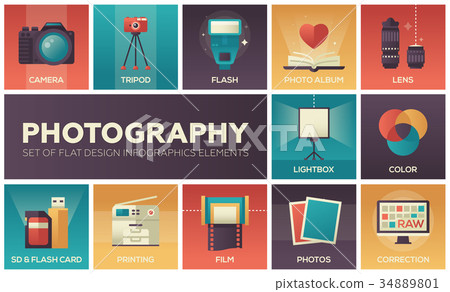Join Us To Uncover Vital Digital Photography Tips That Will Certainly Unlock Your Electronic Camera'S Potential-- Prepare To Catch Sensational Pictures In No Time!
Join Us To Uncover Vital Digital Photography Tips That Will Certainly Unlock Your Electronic Camera'S Potential-- Prepare To Catch Sensational Pictures In No Time!
Blog Article
Post Created By-Lundgreen Kaas
When you initially pick up your video camera, it can really feel overwhelming with all the settings and alternatives readily available. You might find yourself wondering exactly how to browse aperture, shutter speed, and ISO successfully. Mastering these principles is important, but there's even more to photography than just technical knowledge. Recognizing composition strategies and illumination problems can elevate your pictures significantly. So, what if you could discover simple approaches to boost your abilities and begin catching impressive pictures faster than you think? Let's explore how to transform your photography journey.
Comprehending Video Camera Settings
Comprehending your video camera setups is important for recording magnificent pictures. When you get your cam, familiarize yourself with the 3 main setups: aperture, shutter speed, and ISO. Each plays a crucial role in how your pictures turn out.
Start with aperture, which regulates the quantity of light going into the lens. A larger aperture (reduced f-number) allows much more light and produces a stunning background blur, excellent for pictures. Conversely, a narrower aperture (greater f-number) maintains even more of the scene in emphasis, suitable for landscapes.
Next off, focus on shutter rate. This setup determines how long your electronic camera's sensor is exposed to light. A fast shutter speed ices up activity, which is excellent for action shots, while a sluggish shutter speed can produce sensational results like smooth water in landscapes.
Lastly, readjust your ISO. This setup influences your electronic camera's level of sensitivity to light. relevant internet site is useful in low-light situations however can present sound or grain. Aim for the lowest ISO feasible while still accomplishing correct exposure.
Structure Methods
When you're out shooting, composition can make all the difference in just how your pictures resonate with customers. Start by utilizing the rule of thirds; envision your structure split right into nine equivalent areas with two horizontal and 2 vertical lines. Setting crucial elements along these lines or at their junctions to develop equilibrium and rate of interest.
Next, think about leading lines. These all-natural lines in your scene, like roads or rivers, attract the viewer's eye right into the photo, directing them via the tale you're informing.
Don't ignore mounting; usage aspects within your scene, like trees or windows, to produce a frame around your topic, including depth and focus.
Additionally, watch on your history. A cluttered history can sidetrack from your major subject, while an easy one aids it stick out.
Finally, explore balance and patterns; they can produce a striking image that records focus.
Learning Lights Conditions
Understanding illumination conditions is important for catching stunning photographs, as the right light can transform an average scene into something remarkable.
Start by observing all-natural light at different times of the day. Early mornings and late afternoons offer the most effective light, known as the golden hour. headshots for acting near me , warm tones throughout these times can improve your pictures magnificently.
Don't avoid cloudy days either; diffused light can decrease rough darkness and produce a pleasing result, especially for portraits.
Try out backlighting by positioning your topic versus the source of light. This strategy can produce a dreamy halo result and include deepness to your images.
Take note of your cam settings too. Adjust the ISO, aperture, and shutter rate to suit the lights problems. A higher ISO can aid in low light, but be cautious of grain.
Utilize a tripod in darker settings to stay clear of blur.
Finally, do not neglect artificial illumination. Flash and continual lights can be great devices for managing light in tough problems.
Conclusion
Finally, understanding your electronic camera doesn't need to be frustrating. By recognizing browse around here , applying make-up strategies, and utilizing the power of natural light, you'll promptly elevate your photography skills. Remember, exercise makes excellent, so get out there and explore your newly found expertise. With time and devotion, you'll be catching spectacular pictures that reflect your special point of view. Delight in the journey, and do not fail to remember to have fun while you're at it!
